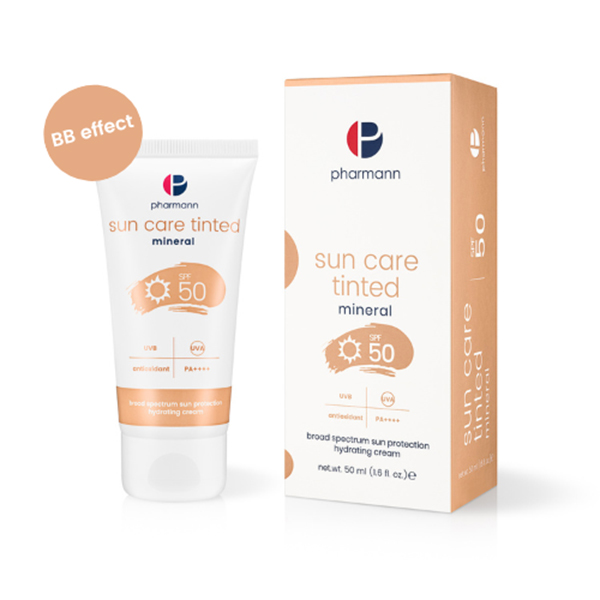Mineral (physical) sunscreens – contain a combination of two mineral sunscreens: Zinc Dioxide and Titanium Dioxide (nano). Unlike chemical (organic) sunscreens, which absorb into the epidermis and absorb UV radiation, mineral (physical) sunscreens remain on skin surface. Produced in the form of micropigments large enough not to penetrate the skin, they create a “protective shield” on it, reflecting and scattering UV radiation.
Natural sunscreens – in addition to melanin, which is naturally present in our body, they are also some natural substances from plants. Some natural sunscreens act as chemical sunscreens: they protect the skin’s DNA against photodamage, absorb UV rays, and have an antioxidant effect. Some of them also have protective properties against HEV (blue light) and IR (infrared light).
The standardized Porphyra Umbilicalis algae extract contained in the Sun care mineral cream is responsible for the protection against both ultraviolet (UVA/UVB) and HEV radiation. Protection against IR radiation is provided by the standardized Knotweed extract present in the Sun care mineral cream.
Standardized Porphyra Umbilicalis Algae extract – natural UVA/UVB, HEV sunscreen, comparable to chemical filters. It also has moisturizing effect, binds water preventing its transepidermal loss (TEWL). It has anti-wrinkle and antioxidant properties, nourishes, smoothes, tightens and strengthens skin firmness.
Standardized Knotweed (Polygonum Aviculare) extract – softens, soothes irritations and accelerates wound healing. It’s a natural sunscreen for IR (infrared radiation). Prevents premature skin aging and damage to blood vessels caused by increasing the temperature of cells.
d-Panthenol (provitamin B5) – has soothing properties and supports healing, stimulates cell regeneration, soothes irritations, moisturizes and smoothes the skin.
High protection SPF 50 – provides the skin with high protection against the harmful effects of UV radiation which – in the long term – may cause a number of adverse skin changes (e.g. discoloration). It is highly desirable in post-aesthetic skin protection, where the longest possible photoprotection of irritated, sunlight-sensitive skin allows to avoid additional irritation, reduces the risk of erythema and strongly contributes to achieving the fullest treatment effects.






